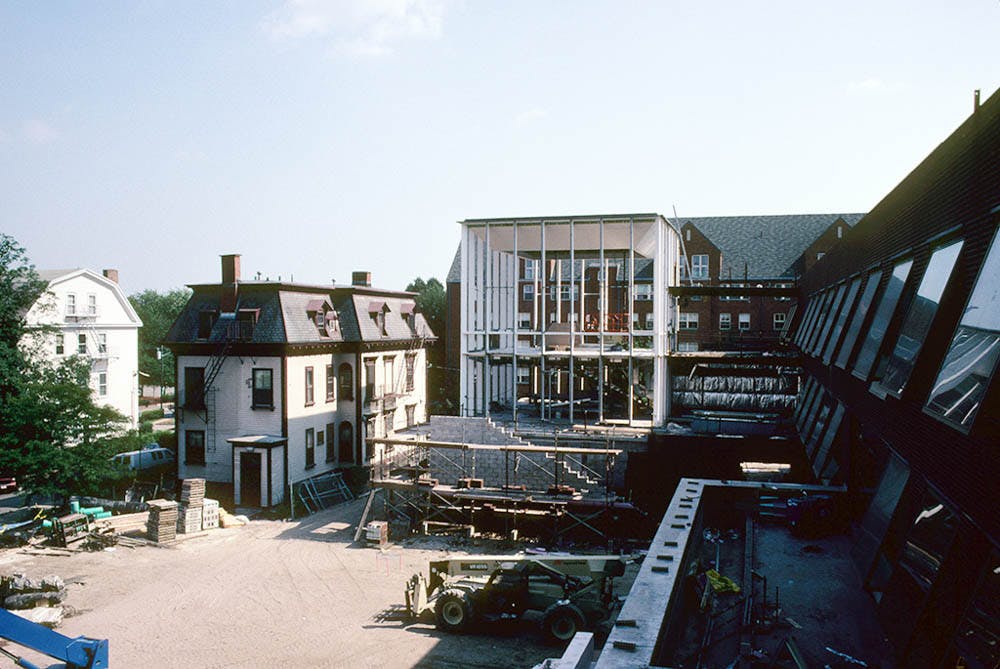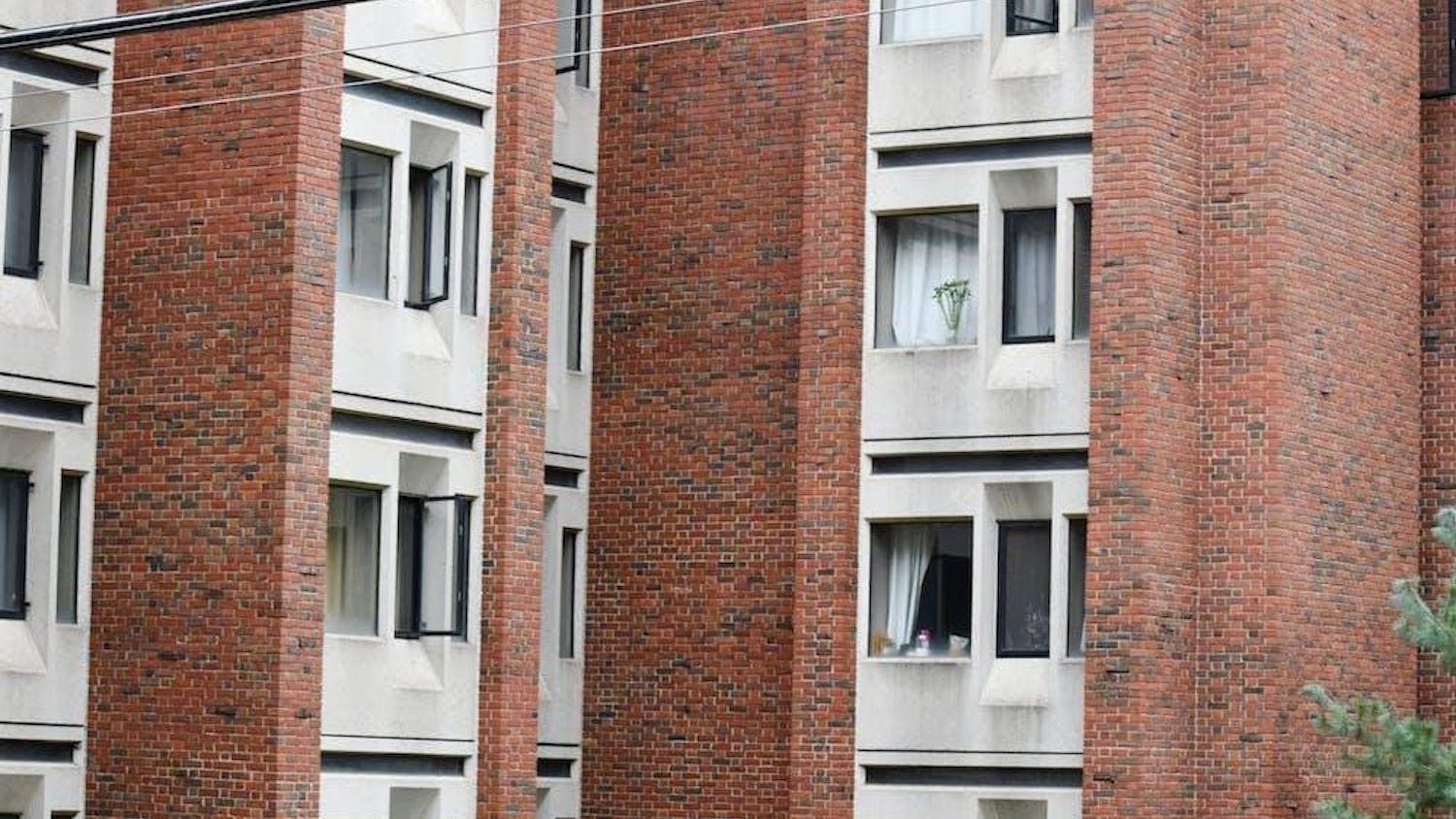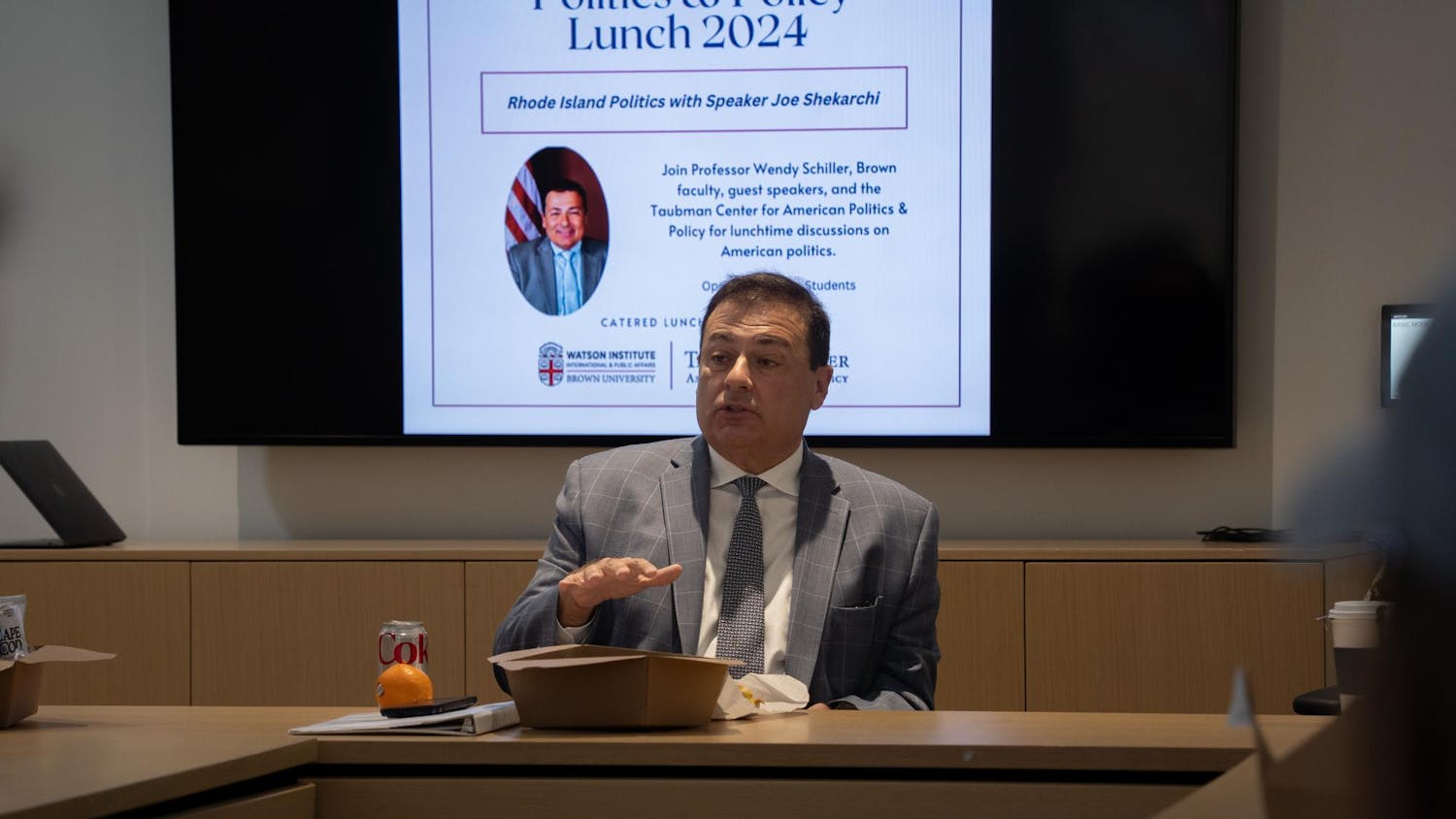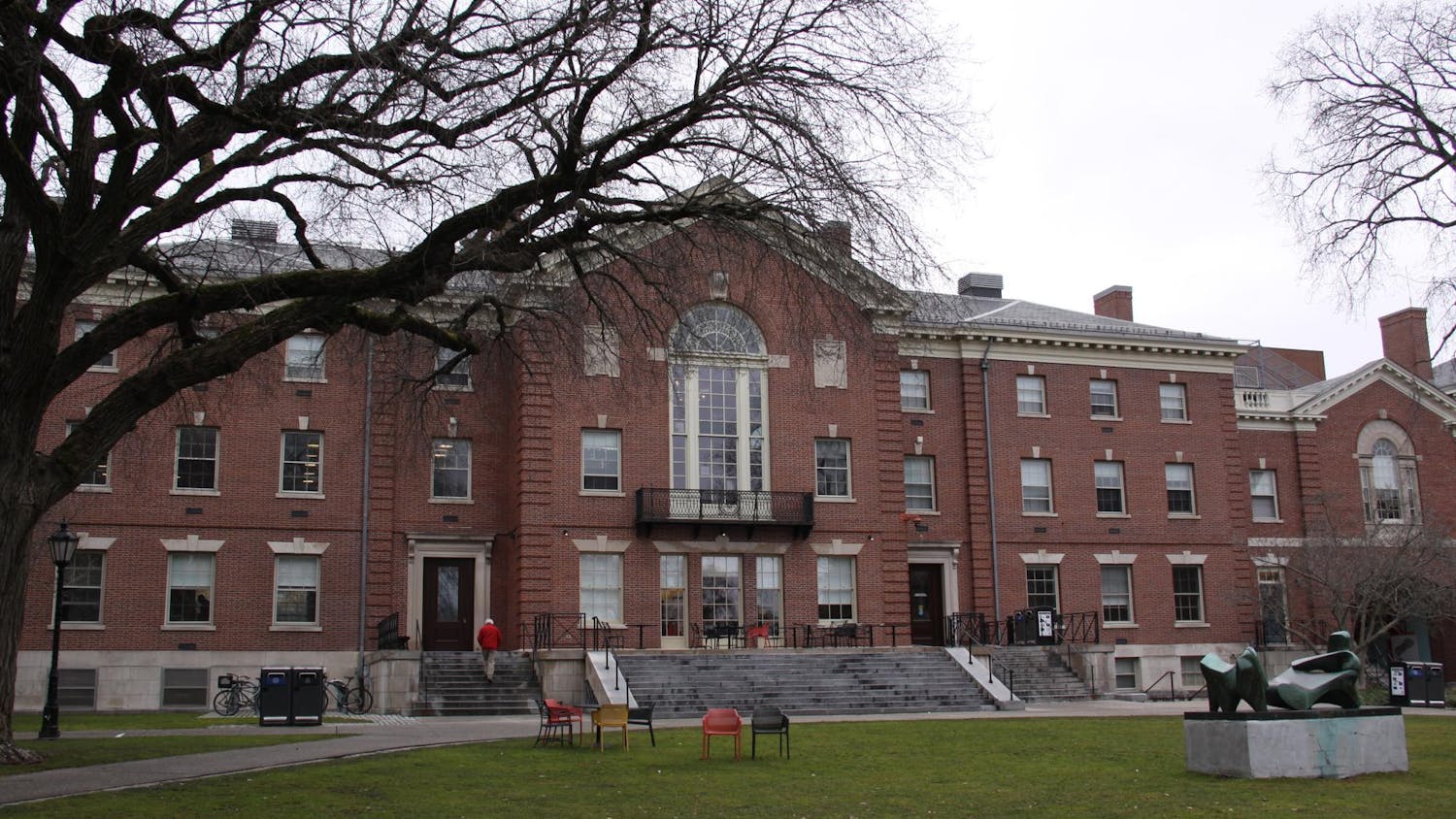The Watson Institute for International and Public Affairs celebrated its 25th anniversary in 2016, highlighting its evolution from a relatively unknown internationally focused program to a prominent institute, said Provost Richard Locke, director of the Watson Institute from 2013 to 2015. Looking toward the institute’s future, leaders of the Watson Institute hope to continue engaging scholars in academic discourse and interdisciplinary integration.
From a bottom drawer to an institute
When Professor Emeritus of Political Science Newell Stultz first came to Brown in 1964, nothing like the Watson Institute existed. The few small, internationally focused programs with limited funds were a “woefully inadequate way” of engaging with the world, he said.
When former University President Howard Swearer arrived at Brown in 1977, he brought along an unprecedented perspective as a political scientist and Russian studies specialist, Stultz said. Agreeing to Stultz’s proposition for a centralized unit for international studies, Swearer named Stultz director of the Council of International Studies, whose work fit into “the bottom drawer in (Stultz’s) basement desk,” Stultz said.
The primary focus of the council was to better represent “international perspectives” to the rest of campus, Stultz said, though he noted the council ran into some challenges with a limited annual budget of $13,000 and a dearth of international students.
In 1980, Thomas Watson Jr. ’37, who served as ambassador to the Soviet Union, offered the funding to create an academic “think tank” focused on reducing the danger of nuclear war, Stultz said. Thus, the Center for Foreign Policy was founded and directed by Mark Garrison, Watson Jr.’s deputy in Moscow, he added.
These two programs — the Council of International Studies and Center for Foreign Policy — were consolidated along with other internationally focused programs under one broad-based Institute for International Studies in 1983, Stultz said.
“This was so much larger and more splendid than my bottom drawer in my office that I couldn’t believe what had happened,” Stultz said.
The various aspects of the Watson Institute were brought even closer together by the creation of Watson’s current home on 111 Thayer St. in 2002, said David Kertzer ’69 P’95 P’98, professor of social science, anthropology and Italian studies. Kertzer joined Watson in 1992 when it still “existed as a conglomerate of different centers.” He ultimately became director of the former Politics, Culture and Identity research area at Watson.
“The new building made so much more possible, allowing the pedagogical role and undergraduate focus to be much more integrated,” Kertzer added.
From 2006 to 2013, the Watson Institute underwent a period of high leadership turnover, with the transitions corresponding with the financial crisis, said Michael Kennedy, professor of sociology who served as director of the institute from 2009 to 2011.
“When I came in, I was concerned about spending money when we had lost so much,” Kennedy added.
In addition to financial issues, Kennedy said the upheaval could also be explained by structural contradictions, such as resolving “conflicting ambitions and interests among Watson and University faculty” and the lack of leadership alignment between the director of Watson, provost and University president.
Looking back at his time as director, Kennedy said the Watson Institute could have been better led if Watson leadership had given more priority to the importance of undergraduate learning, recognized that the institute’s interests served the University and brought other University programs under Watson’s control, as Locke ultimately did.
Locke “was right in recognizing that Watson needed to enhance what Brown needed,” Kennedy said.
The rise of Watson
Even before Locke left his appointments at the Massachusetts Institute of Technology and officially started his position as director in 2013, he saw the potential for an institute with outstanding faculty and distinctive interdisciplinary integration. Immediately after his hire, Locke began travelling to Brown weekly to speak with faculty in various programs as well as look at other leading schools of international affairs. This “internal discussion and external benchmarking” helped him sketch out a strategic plan before he arrived, Locke said.
“A lot of people initially didn’t even know what Watson was, and that seemed crazy,” Locke said.
Since 2013, Watson has grown tremendously, hiring 19 new faculty members, integrating with regional programs, working with different centers on campus and building new spaces for intellectual discourse, said Edward Steinfeld, director of the Watson Institute who started his position in 2015 and continued refining Locke’s strategic plan.
The plan focused on Watson’s efforts to address three major global challenges: security, development and governance. As others bought into this vision, enough funds were raised to hire new faculty members and integrate the Taubman Center for American Politics and Policy with Watson in 2014.
“We believe that training leaders for dealing with global problems from a public policy perspective is core to our mission,” Steinfeld said.
With the integration of Taubman, “suddenly, you had all of this excitement in a building that had been somewhat empty a couple of years before,” Locke said. “All of the offices became filled, there were a ton of activities and seminars and people knew about Watson.”
Integration and engagement
“We want to bring (scholars) together so that there’s a unitary sense of ‘One Watson,’” said Steven Bloomfield, associate director of the Watson Institute.
Watson currently houses a total of six regional programs: Africa Initiative, Brazil Initiative, Center for Contemporary South Asia, Center for Latin American and Caribbean Studies, China Initiative, Humanitarian Innovation Initiative, Middle East Studies and Taubman. Prior to the recent growth, many of these programs either did not exist or were not formally a part of Watson, Steinfeld said.
For example, for its first four years, the Center for Contemporary South Asia existed as an initiative — an experimental undertaking, said Ashutosh Varshney, director of the Center for Contemporary South Asia. When the University asked them to apply for the status of a center, “that was the University’s way of saying that they wanted these activities on a more durable basis,” Varshney said.
The idea of “One Watson” also applies to the integration of its three undergraduate concentrations — international relations, development studies and public policy. This allows Watson to infuse undergraduate programs “with our research that can link to real-world issues,” Steinfeld said.
“International relations is very interdisciplinary in nature, so it’s really nice to have Watson as a home where you can connect with other social sciences,” said Amelié-Sophie Vavrosky ’18, one of the international relations departmental undergraduate group leaders.
Watson’s ability to connect disciplines has been particularly essential during President Trump’s administration.
“In the aftermath of the election, it’s been powerful how Watson has drawn on our scholarly community and invited other people to talk about the dangerous policies (the election) may have resulted in,” said Elena Shih, assistant professor of American studies, who joined Watson as a post-doctorate.
It is important that Watson focuses on institutions, governance and process in the wake of polarizing daily politics, said Carrie Nordlund, associate director of public policy, adding that policies today “are not just international or domestic, but global.”
Future of Watson
With its academic expansion, Watson is making space — both physical and intellectual — to accommodate all of its initiatives. Watson is currently housed at two buildings, 111 Thayer St. and 59 Charlesfield St., but there are plans for a new building to be erected on Brook Street, Bloomfield said.
Moving forward, Steinfeld says Watson is focused on growth in three areas: recruiting faculty, enhancing and expanding the PhD program and “increasingly consolidating across regional programs in a scholarly way.”
But the institute is also looking for ways to be not only an institute for academic research, but also a community for scholars.
“There’s a lot of work that needs to be done between those (building) bricks to provide the sense of community and common purpose that an institution like (Watson) needs,” Bloomfield said.
Watson plans to raise funds to support undergraduate and graduate students, post-doctorate fellows, programming and research, Bloomfield said.
Watson provides the international relations studies department “a good amount of grants and research opportunities, but I think there’s a push for even more improvement in that area,” said Drashti Brahmbhatt ’19, one of the international relations DUG leaders. She added Watson could further support students by sponsoring more student-led research and hosting more events where they can present their research.
One of the main aims for Watson’s immediate future is making the space more permeable to members of the undergraduate community, regardless of concentration, according to multiple sources.
Both Steinfeld and Bloomfield said the new building will place an emphasis on public space, with shared space and smaller study rooms for students. “I would love to have our current buildings filled with students,” Steinfeld said. “It will infuse us with even more energy and allow us to learn from them.”
This sentiment is echoed by Edwin Portugal ’17.5, who often studies in 59 Charlesfield St., but feels as if “most undergraduate students don’t even know about it.” Portugal, a public policy concentrator, also said that he hoped to see more undergraduate focus in the institute, such as incorporating more informal events catered toward undergraduates.
Another area for improvement is the diversity of its faculty, according to multiple sources.
“The international relations department is still a mainly white-male dominated field,” Brahmbhatt said, “But there are a lot more voices coming in — important voices that should have been there the entire time.”
The institute also has opportunities to continue its outreach beyond Brown. One program that strives to provide answers through community outreach is Watson’s Choices program, which takes issues of international affairs and public policy — such as Black Lives Matter or political upheaval in the Middle East — and develops curricula for high schools in the United States, Steinfeld said.
“It’s right and appropriate that we are trying to deliver knowledge and thinking to communities that might not have exposure to the resources,” Steinfeld said.
Shih hoped to see more of such community outreach. “I was particularly moved by the director of Watson’s give-back partnership with the Dorcas Institute” to support refugees and immigrants in Rhode Island, Shih said. “We have the resources and need to continue making these meaningful connections.”





